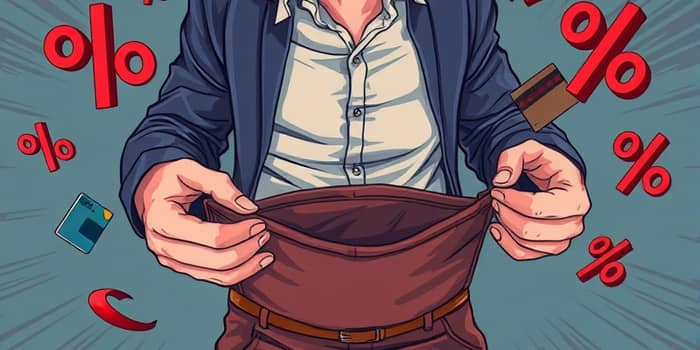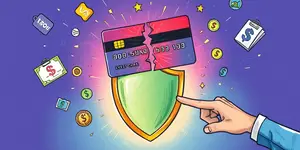
Every time you swipe your card, sign a loan document, or accept a new line of credit, a percentage silently chips away at your hard-earned money. Understanding APR—Annual Percentage Rate—is essential to protect your financial well-being. Whether seeking a mortgage, financing a car, or managing credit card debt, APR influences how much you owe over time.
High APRs can turn small debts into burdens that follow you for years. This article offers an in-depth exploration of APR, detailed examples, regulatory context, and actionable strategies to keep interest from devouring your resources.
APR denotes the actual yearly cost of borrowing. It encompasses both the interest charged by the lender and any mandatory fees, creating a unified metric for consumers. Unlike a simple interest rate, which only reflects the cost of borrowing for a single period, APR projects that cost over an entire year.
By law, lenders must disclose APR on loan documents and credit card offers. This transparency requirement prevents deceptive marketing and hidden fees, ensuring you receive a clear snapshot of your total borrowing expense before signing on the dotted line.
APR calculation can appear complex, but breaking it into parts clarifies the process. The core formula:
APR = [ (Total Interest + Total Fees) / Principal / Loan Term in Days ] × 365 × 100
For instance, imagine you borrow $2,000 for two years at a 5% interest rate with $200 in fees. First, calculate the total interest: $2,000 × 0.05 × 2 = $200. Then add fees for a combined cost of $400. Dividing that by the principal ($2,000) and by the loan term in days (730) yields a daily rate, which you multiply by 365 and by 100 to express as a percentage.
This approach ensures you compare apples to apples across various loan structures and terms, giving you the power to select the most favorable offer.
While APR captures most mandatory costs, it omits elements like compounding and certain penalties. For example, APR does not fully reflect the impact of daily compounding interest that can rapidly increase your balance if you carry a credit card balance month to month.
Because lenders have some discretion over the fees they include, it’s possible for two loans with the same APR to carry different true costs. Always inquire about excluded charges to avoid unwelcome surprises.
APR varies widely depending on product type, loan term, and borrower creditworthiness. Here are typical ranges for common credit vehicles:
High APRs on short-term, unsecured credit like payday loans illustrate how quickly interest can compound, while secured loans such as mortgages and auto loans generally feature more moderate rates because collateral reduces lender risk.
High APRs can lead to a perilous minimum payment trap. When credit card statements require only a small monthly payment—sometimes as low as 2% of the outstanding balance—it can take decades to pay off the debt. For example, a $5,000 balance at 25% APR with a 2% minimum payment could linger for over 30 years and rack up thousands in interest.
Consider a personal loan of $10,000 at 25% APR paid over five years. Total interest paid would reach about $7,639. If you managed the same loan at 8% APR, interest would be approximately $2,728—a difference of nearly $5,000. That extra money could fund emergencies, retirement savings, or educational expenses.
The Truth in Lending Act (TILA) mandates clear disclosure of APR and finance charges before you commit. Creditors must provide a written estimate of your APR, and they must notify credit cardholders at least 45 days before raising the APR on existing balances.
However, not all products fall neatly under these rules. Some payday lenders and small-dollar financing services find loopholes or operate under state-specific regulations. Always research both federal and state consumer protection laws before signing any credit agreement.
By tackling the highest-APR balances first, you accelerate overall debt reduction and free up cash flow for saving or investing.
Take control of your borrowing today, and let that knowledge shield your wallet from unnecessary financial pain.













